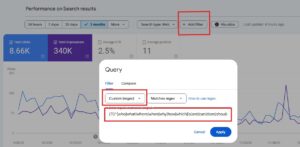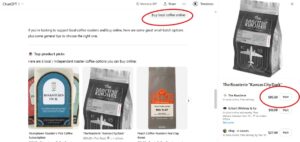Creating blogs is good for your search engine rankings, but did you know that you also need to optimize these blogs? Search engine optimization (SEO) is a critical factor in your blog’s and website’s visibility. If you are taking the time to write blogs, you want people to be able to find all of the valuable information that you are providing them. This is where optimizing your blog posts becomes crucial.
Check out Rank Fuse Digital Marketing’s nine tips to help you optimize your blog posts.
Table of Contents:
- Perform Keyword Research
- Use Topic Clusters
- Write for Featured Snippets
- Customize Your URL
- Optimize Internal Links
- Use SEO Tools to Help
- Add Images & Videos
- Make Sure Your Article is Mobile Friendly
- Ask For Professional Help
1. Perform Keyword Research
Keyword research provides you with the information you need to craft blog content that will get seen in rankings. At Rank Fuse Digital Marketing, we use a variety of different tools to perform keyword research. However, our favorite is SEMRush.
Our first step is always to see what we are already ranking well for. We don’t need to target those keywords again. We want to look for keywords for which we are ranking on the second or third page.
For these keywords, we can try to gain first-page rankings by creating better content than what is already on the first page. These are usually pretty easy wins.
Then we can start delving into new keyword opportunities where we want to consider search volume. We don’t immediately shoot for the keywords with high search volumes, because those are very hard to rank for.
Instead, we set our sights on the keywords with mid-level search volumes. We aim to get on the first page for a few of these. This will boost our likelihood of getting a first-page result for some of those higher volume keywords in the future.
For each blog, we recommend focusing on just one or two long-tail keywords that match your audience’s search query. Limit the number of keyword phrases you are focusing on to reduce your risk of overlapping in the future.
A detailed content calendar can help you stay on track and organized in your content and SEO efforts. If you are interested in a personalized content strategy, reach out to us today at 913-703-7265.
Learn more about keyword research here.
2. Use Topic Clusters
By creating a pillar topic and writing individual pieces of cluster content focused on even more topic-specific keywords, you can form topic clusters on your website. Topic clusters provide your website with more interlinking opportunities, making your website more authoritative. This also boosts user experience for those who land on your website.
The tactic of creating topic clusters also helps prevent different blogs from competing for rankings. Creating multiple blog posts on the same topic often leads to numerous pages competing for rankings on the same SERPs. However, you can reduce the risk of this type of cannibalization by creating a pillar page that you use to link out to individual blogs and vice versa.
When creating topic clusters, you want your pillar page to answer every question someone might search for a specific keyword. In addition, it still needs to be broad enough to act as an umbrella page for numerous blog posts.
3. Write for Featured Snippets
You already have to write for users and search engines. Now, we are telling you that you also need to write for featured snippets. We know it isn’t easy to create content that perfectly lines up with so many different needs. However, writing for featured snippets doesn’t have to have a dramatic impact on your content.
Featured snippets tend to be short how-tos, bulleted lists, or brief answers that appear at the top of SERPs. Featured snippets are meant to provide a quick answer to common searches of who, what, where, why, and how? questions.
Since featured snippets appear at the top of the SERPs, you really want to be given this high-profile ranking position. To write for featured snippets, you need to see what featured snippet already appears for your desired search query. If the current featured snippet is a bulleted list, you will want to structure your content accordingly.
You will want to make all your content, headings, and subheadings are clear and easy to read. You can also build your lists or steps as a hash linked list at the top of your article. Then you can provide more information below under each heading or subheading.

4. Customize Your URL
URL structure is more important than many people realize. Relying on the automatically generated URL in your content management system might not be the way to go. Instead, create a custom URL for each page or article you post on your website.
By creating a custom URL, you are making it easier for search engines to understand what the page is about, allowing the pages to be properly indexed. Custom URLs also make it easier for users to quickly determine what the page will be about. This becomes especially important as you start interlinking pages throughout your website.
Let’s use ideas from our own website to explain what your URL structure should look like. When you are using topic clusters, the main topic page might be something like ‘/seo/’. Each blog that is related to SEO could have a structure like this: ‘/seo/8-seo-tips-for-beginners/.’ Remember that this is also a great opportunity to add your keyword phrase to your URL.
5. Optimize Internal Links
Internal links are key to helping website visitors maneuver around your website. As you are writing your content, think of ways to link to additional pages or blog posts on your website. Have you written a blog about SEO? Link it back to your SEO page. Adding internal links to your website keeps users on your website longer, and also encourages them to keep exploring your website.
Internal links are also incredibly beneficial to your SEO strategy because they help search engines see that you have other topically relevant pages. This leads search engines to consider you an authority on the topics you are trying to rank for on search engine results pages. When search engines find your content valuable, they are more likely to rank you better.
The topic cluster model makes internal linking easy. You should be able to link many of your related pages to one another to provide additional value to your readers. However, all internal links need to be logical and relevant. Randomly linking pages doesn’t add value and can frustrate readers.
Linking is fairly straightforward, but there are a few things you should remember. First, your anchor text should be no more than five words. It should be clear to your users where you are going to take them.
Links should also be easy to see. You shouldn’t hide links on your pages because they won’t provide any value to your users.
6. Use SEO Tools to Help
Going at SEO without any additional tools or plug-ins is a real mess. At Rank Fuse, we utilize the Yoast plug-in to help with our on-page SEO tactics.
Yoast helps us remember to focus on our SEO strategy and evaluates how good our content is. This allows us to make changes before pushing a new article live and sharing it all over social media. With Yoast, you can easily see where you need to make improvements and change them on the page.
Yoast allows you to choose a focus keyword, which it then analyzes throughout your content. Yoast will tell you if it looks like you are keyword stuffing. Keyword stuffing is the process of cramming your focus keyword into your content too frequently. Yoast will also tell you if you haven’t used the phrase enough on the page.
It can also take into consideration your metadata (title tag and meta description) and any imagery you have put on the page. Yoast checks for internal and external links, as well.
We also rely heavily on SEMRush to help us with SEO. There is a content template tool in SEMRush that allows you to input your target keyword. Once you have chosen the keyword, SEMRush looks at the content that already ranks well for that topic.
Then it provides you will some SEO recommendations. You can even check your content in real-time to see how it stands up to your competitors.
Remember, we also use SEMRush to help us choose keywords during our keyword research, so it is an invaluable asset for those who are concerned about their website’s SEO health.
There are many tools like these that content marketers swear by. You might want to shop around and see which ones work best for you. We offer a few free tools that might help you.

7. Add Images & Videos
Videos, images, and infographics are excellent ways to make your content more visually appealing to your readers. We also love to provide information using visual pieces, because it is more interesting and exciting for users. Any visual elements on the page are going to draw people in, but a video is likely to perform the best.
Videos require users to stay on the website for a certain amount of time to get what they are looking for. Keeping users on your site improves the bounce rate. Additionally, users are often more likely to share an article if it features a great video.
Consider spending the time (and money) on unique visual elements for your website on occasion to supplement your written content. Additionally, include alt text on your images, infographics, and videos to help search engines identify the topic they cover. Alt text should ideally include your target keyword.
8. Make Sure Your Article is Mobile Friendly
Mobile should be high on your priority list. For many businesses, most traffic comes from mobile devices. For this reason, you want your website to look and perform well on these devices. As we approach 2021, it is important that we continue to make mobile a priority.
You can run your website through Google’s mobile-friendly test tool to determine any issues. Resolving any flagged issues can help improve your site’s performance.
When you are writing content or creating pages, think about how things will look on mobile devices. Break up large chunks of content to make everything easier for your mobile users to read. Your visual elements will also really help user experience on mobile devices.
9. Ask For Professional Help
Optimizing websites and content is a complex set of skills and knowledge that not everyone has time for. When the time comes to choose between running other parts of your business or becoming an SEO expert, it’s often best to outsource this type of work to the professionals.
Digital Agencies (like Rank Fuse) are here for you! Our content marketing and SEO teams can help several organizations write great content and optimize their existing content every day. If you want to be sure you are set up for maximum success in search engines, please call us today at 913-703-7265 to learn how we can help.




